Vegetation and Earth
Urban Salinity | Buildings and Structures | Road Assets
The effect of salt on vegetation varies between species, between individual plants and throughout the stages of the plant's development. Saline water can be toxic to a plant leading to wilting, discolouration, defoliation, stunted growth and even death. As an environment becomes more saline, vegetation communities will change and adapt to the new conditions. Plants less tolerant of salt will die off first, leaving the more opportunistic salt tolerant species to colonise an area.
Trees and large shrubs that die back from the outer canopy leave a halo of dead branches above the remaining new growth which may indicate stress due to either high watertables or salt toxicity.
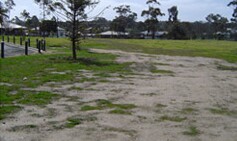 Patchy lawn growth adjacent to Lake Neangar. | 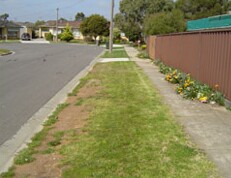 Patchy growth and discolouration of grass on nature strips adjacent to a known salt-affected site. |
It is important to note that in urban environments, dieback and poor growth could also be due to the use of poor quality fill or heavy traffic.
Bare patches of soil that occur in the presence of salinity may display patches of soil that have a darker or greasy appearance. This is due to organic matter accumulating at the soil surface because of high salt levels.
The appearance of white salt on exposed rock surfaces, particularly on porous sandstones, may be an indicator of high watertables and evaporation of saline groundwater from the rock mass. However, it may simply represent efflorescence resulting from salt accumulation caused by rock mineral weathering.
Salt stored in the unsaturated zone may also appear on the rock surface through evaporation of moisture from within the rock mass. The appearance of salt on porous rocks needs to be considered in conjunction with other indicators before it can be attributed to dryland salinity associated with high saline groundwater levels.
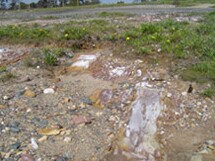 White salt crystals forming on the bare ground or rock surface. | 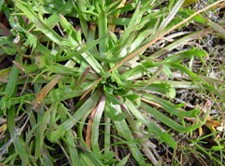 Close-up of white salt crystals forming on rock surface. | 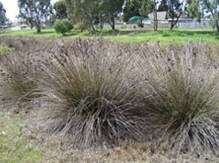 Clumps of spiny rush in flower. |  Buck's Horn Plantain |
It should not be assumed that an area is salt-affected just because it is dominated by one species of salt tolerant vegetation, such as spiny rush or buck's horn plantain, as many of these species will also colonise waterlogged or degraded areas. It is important to look for a combination of indicators. The presence of salt tolerant vegetation species (especially a mix of species) as well as the absence of salt-sensitive species (that may be common in adjacent areas), together with other indicators, may provide evidence of salinity. The Loddon Murray Region - Spotting Soil Salting Guide provides a comprehensive and easy-to-use guide to identifying a number of salinity indicator plants (which can be used as indicators of the extent and severity of soil salting).


